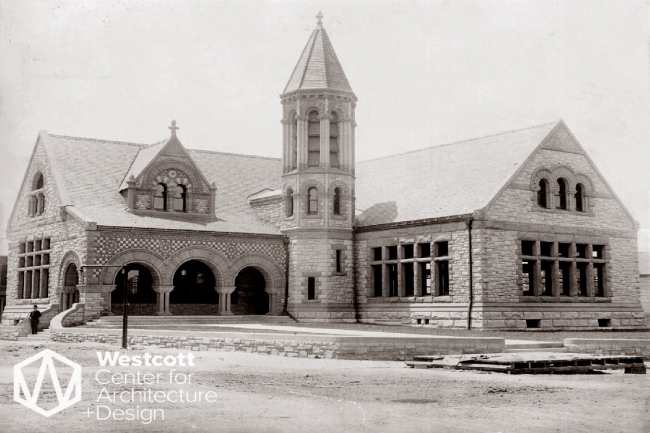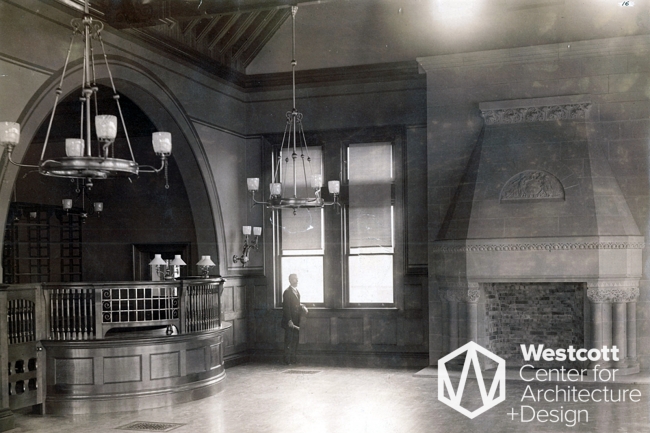It seems safe to suggest that the presence of a public library denotes not only an increase in a community’s size, but also a desire to establish a center of knowledge, free and open to all. It was just that desire that inspired civic-minded Benjamin H. Warder—of Warder, Bushnell, and Glessner, the firm that manufactured the Champion Reaper—to gift money for the establishment of a library.
By 1890, design and construction of The Warder Library were completed. The building was conceived by Shepley, Rutan, and Coolidge, the successors to the firm of preeminent American architect Henry Hobson Richardson. Warder, however, was no stranger to Richardsonian design: prior to the architect’s death in 1886, Warder commissioned Richardson to build the Warder family residence in Washington D.C. It is thought that he likely commissioned Richardson’s successors in hopes of achieving the same kind of architectural excellence with his library. In addition, the same building company that constructed Warder’s Washington home—the Norcross Building Company—was contracted to build the library. With their design for The Warder Library, Shepley, Rutan, and Coolidge sought to utilize Richardson’s signature design elements, such as tripartite arches, mixed, rough-stone construction, and foliate stone ornamentation, so that the building might be worthy of the praise that became synonymous with the Richardsonian style.
In addition to the building’s stately appearance, some of the most striking elements are the intricately carved creatures and leafy designs encrusting the structure. Among them are over twenty different stone heads incorporated into the design, as well as a number of symbolic presences: a large owl perched to overlook Spring Street (signifying wisdom) and tiny monkeys hidden in the capitals of the porch columns (signifying curiosity). In addition, there is a variety of non-repeating ornamentation, most noticeably the differences between the capitals of the four porch columns.
The Warder Library is also fortunate to have had much of its original interior design preserved—a design which mirrors the rich expressiveness of the exterior design. The monkeys on the entrance columns can also be found inside the building, hiding between the columns in the Reading Room fireplace. Atop the selfsame fireplace, there is also a hood bearing the seal of Ohio and figures of architecture and industry—the two aspects of life around which Warder focused his business. In addition, the carved-stone foliage on the exterior columns is mimicked in iron-on-wood with the interior ceiling trusses.
Although Springfield moved the public library to its present location on Fountain Avenue in 1989, the building donated by Benjamin Warder is still used as a center of learning, now housing the Warder Literacy Center, an organization dedicated to increasing knowledge and skills through tutoring.
What remains so remarkable about the architecture of The Warder Library is perhaps the mood that emanates from the structure. One cannot ignore the air of individuality, curiosity, and knowledge that defines the building. It is as if the architects were able to capture the spirit of learning and translate it into tangible form, such that The Warder Library might be able express its purpose both inside and out.


